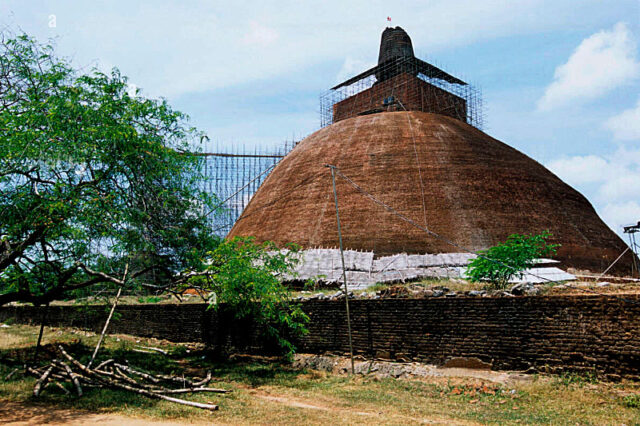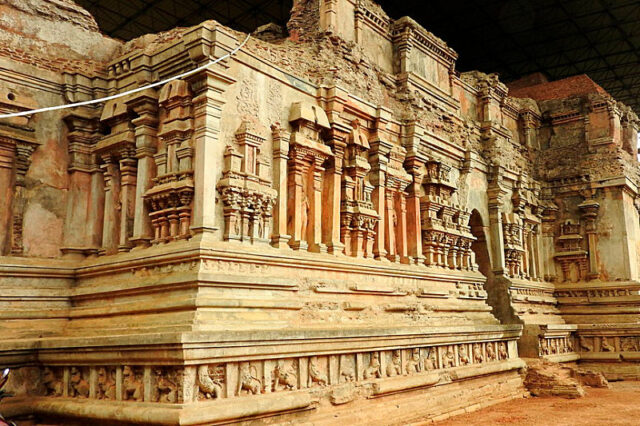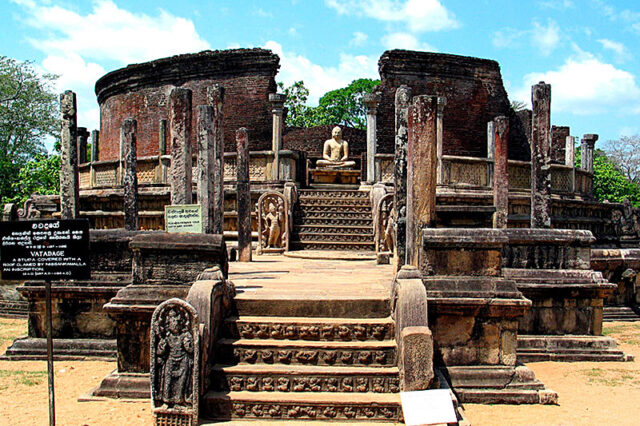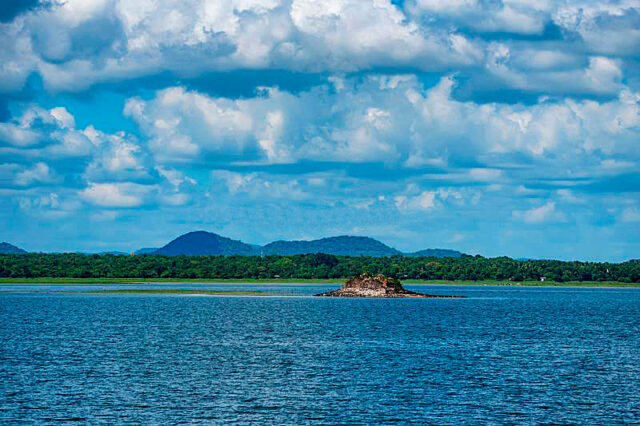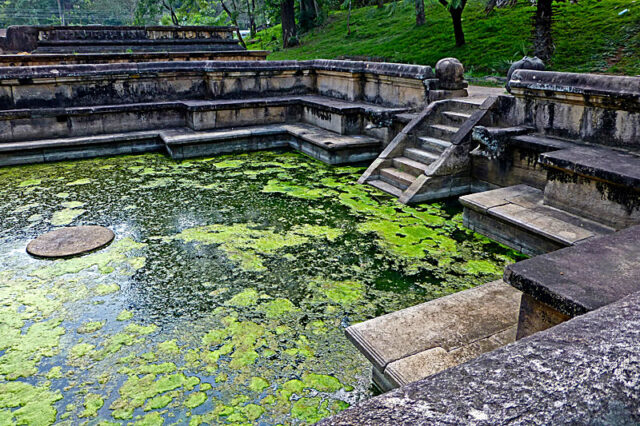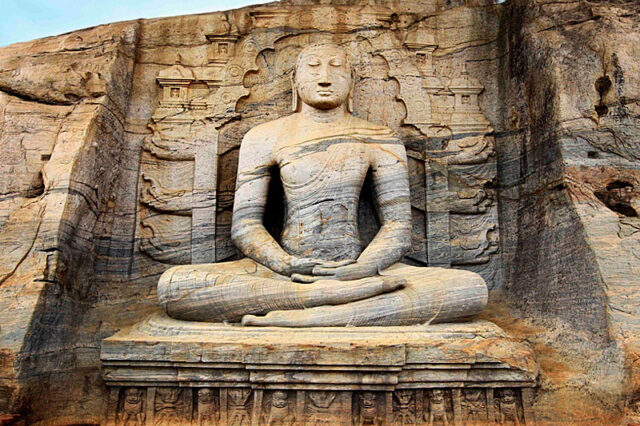The island’s medieval capital (11th & 12th century A.D.)is situated 216 km. from Colombo and rose to fame after the decline of Anuradhapura. The city in its day was fortified with three concentric walls, beautified with parks and gardens and sanctified by many shrines.
A unique irrigational complex known as the Sea of Parakrama watered the city as well as the surrounding plains. The largest of the man-made reservoirs, the huge Parakrama Samudra, is larger in size than Colombo Harbor. See also the ruins of the King’s Council Chamber, the Royal Citadel, the Kumara Pokuna, Royal Pavillion; Siva Devale (11thcentury Hindu Temple), the Thuparama with its original vaulted roof, the Vatadage Relic House, lavished with moonstones, guardstones and sculptured writings; Kiri Vehera — the best preserved of all Sri Lanka’s un-restored dagabas; Gal Vihare — the mostimpressive sculptures are the colossal Buddha images carvedon the face of a granite boulder. The recumbent Buddha measures 14 metres and the standing figure is 7 meters in height; Demala Maha Seya — a shrineof novel design, the dome rising from a terraced and moulded base and is left nfinished at a height of 15 meters; Tivanka Image House — the largest brick-built shrine in Polonnaruwa.
